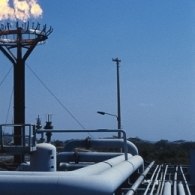I’m still swamped with various projects, so in the meantime, here’s another Oxford Analytica brief. This one is from mid-December…
—-
Although China and the United States have focused greater attention on Central Asia in recent years, Russia remains the dominant power in the region. Its size and the cultural, political and economic connections that remain from the Soviet period are such that Central Asian countries are reluctant to take any actions that would antagonise Moscow. For Russian leaders, Central Asia serves as a buffer zone that protects Russia’s southern border from potential threats.
Impacts:
- Increasing Chinese economic presence in Central Asia will curtail Russia’s efforts to limit China’s regional political influence.
- After NATO’s exit from Afghanistan, Russia and Central Asian states will cooperate to prevent radical Islam from destabilising the region.
- Shifting patterns of energy demand and supply will reduce Russia’s ability to use energy as a tool for political influence.
ANALYSIS:
Russia’s various initiatives in Central Asia are shaped by three interest groups with widely divergent interests that often work at cross-purposes to each other:
- The military and defence industry is focused on the role of great power competition in the region; it seeks to promote arms sales and to increase Russia’s military presence.
- The energy industry focuses on securing exclusive rights to gas transit from Central Asia to Europe.
- The security services concentrate on the transnational threats to Russia from radical Islam, terrorism and drug smuggling.
Maintaining monopoly
Throughout the last decade, Russia sought to maintain its energy-transit monopoly on the export of petroleum and natural gas from Central Asia. Until 2005, all major export pipelines from the region went through Russia giving it control over transit fees. Russia’s monopoly over natural gas transit to Europe also gave it political and economic leverage over downstream countries dependent on supplies of Russian natural gas for domestic consumption.
The construction of alternative pipelines over the last decade has eliminated Russia’s monopoly on hydrocarbon transit from Central Asia. Energy-producing states in the region can now sell their products to China and Iran. At the same time, changes in patterns of supply and demand for natural gas in Europe have decreased the political and economic significance of Russia’s remaining monopoly on natural gas supply to some European countries. The development of new methods of shale gas extraction in the United States has increased the supply of LNG to Europe at the same time as the 2008-09 global financial crisis has led to a sharp drop in demand for natural gas.
These factors decreased Russia’s ability to set prices and to use its control of energy supply for political ends, thus reducing the importance of future Caspian pipeline transit. Russia is now likely to focus on energy production in the Caspian Sea region and has already begun to develop several oil and gas fields that it controls jointly with Kazakhstan.
Keeping China at bay
China has sought to increase its economic and political influence in Central Asia without alienating Russia for a number of reasons. For example:
- Central Asia has become one of China’s primary energy suppliers;
- Central Asia serves as a security buffer zone between China and both Russia and the United States; and
- China seeks to prevent Uighur separatists in Xinjiang from using Central Asia as a safe haven.
To further these goals, China made large investments into the Central Asian economies and, in particular, in energy infrastructure. The region provides raw materials to China in exchange for finished products such as machinery, food and consumer goods.
Russian leaders fear that their country’s position in Central Asia is gradually being displaced as China’s political influence and economic power grow. To maintain its sway in Central Asia, Russia has focused on ‘tying’ China into regional networks and institutions while retaining levers of influence through institutions in which China is not a member.
In the security realm, Russia has combined participation in the Shanghai Cooperation Organization (SCO) with its role in the Collective Security Treaty Organization (CSTO). While the SCO provides a neutral forum where Russia can discuss security and plan joint operations and exercises with China, the CSTO allows Russia to address Central Asian security issues without China’s participation. At the same time, Russia has sought to counter China’s economic influence in Central Asia by setting up the Customs Union, which, in 2014, is expected to include Kyrgyzstan and Tajikistan. Recent discussions concerning the establishment of the Eurasian Union in 2015 are also part of the effort to cement Central Asian economic ties to Russia.
Ensuring political stability
Although most of the regimes in the region have endured for over 20 years, Central Asia is now entering a period of potential political instability.
- Uzbekistan, Tajikistan and Turkmenistan are all bracing for a potential resurgence of Islamist radicalism in the aftermath of the likely US withdrawal from Afghanistan in 2014.
- Kazakhstan and Uzbekistan — both states ruled by authoritarian presidents in their mid-1970s — are highly vulnerable to succession risks.
- Kyrgyzstan is still recovering from two episodes of violent regime collapse in the last decade.
The potential destabilising influence of radical Islamist groups and drug smuggling networks is a key concern for Russia. Moscow believes that the current Central Asian leadership has been able to contain the threat of radical Islam and is worried that a regime change, combined with the withdrawal of NATO troops, would facilitate the spread of radical Islam to Russia.
These concerns have led Russia to provide various forms of security assistance to the region’s more vulnerable states. In the last year alone Russia has:
- extended leases on military bases in Kyrgyzstan and Tajikistan;
- sold weapons to Kazakhstan and Turkmenistan;
- sought to persuade Uzbekistan to re-engage with the CSTO; and
- agreed to provide 1.3 billion dollars to Kyrgyzstan and Tajikistan to modernise their military forces and ensure their security after the departure of Western troops.
The extension of Russia’s military base agreements with Central Asian countries, together with Kyrgyzstan’s decision to ask the United States to vacate the Manas base after the NATO departure from Afghanistan, will leave Russia as the sole security provider to vulnerable states in the region.
CONCLUSION: Russia’s security relations with Central Asian states will strengthen as they face the consequences of NATO’s withdrawal from Afghanistan in 2014. At the same time, Moscow’s efforts to remain the dominant economic partner of the region’s key players will likely falter as China strengthens its position as the main recipient of Central Asian energy exports and a key supplier of imported consumer products.
Dmitry Gorenburg is a Senior Analyst at CNA blogging for PONARS Eurasia on military and security affairs in Russia and Eurasia. This comment is also available on Russian Military Reform.










